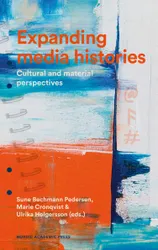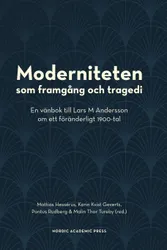Under 1900-talets första hälft miste över 120 miljoner människor livet på slagfält, i läger, epidemier och svält som följde i världskrigens spår. Offren stod ofta i förgrunden i rapporteringen och minnen av terror och trauma levde kvar i fredstid.
I återkommande reportage och berättelser etablerades och förstärktes bilder av krigets plågor i allt från dagspress, film och radio till veckopress och serietidningar. Genom dem bearbetades minnena av lidande och död, men mediet satte också ramarna för vad som var möjligt att berätta.
I War Remains undersöker forskare i historia, litteraturvetenskap, retorik, filmvetenskap, medievetenskap och mänskliga rättighetsstudier dödens och lidandets mediehistoria under 1900-talet. I analyserna visar de hur erfarenheter och minnen av krigen gavs skilda uttryck och innebörd. Och hur världskrigens kvarlevor finns med oss än idag.
Medverkande:
Åsa Bergström, Lunds universitet
Marie Cronqvist, Lunds universitet
Sara Kärrholm, Lunds universitet
Sofi Qvarnström, Lunds universitet
Laura Saarenmaa, Lunds universitet och University of Tampere
Kristin Skoog, Bournemouth University
Lina Sturfelt, Lunds universitet
––––––––––
What remains after war? In the World War era more than 120 million people died an untimely or violent death. The horrifying experience of mass death lingered on in cultural narratives for years. The cultural output repeated, re-inforced, or renegotiated people’s beliefs about war and suffering, turning trauma into something that could be situated within the conventions of public display.
In War Remains an interdisciplinary group of researchers offer an innovative approach, insisting on the importance of media forms for remembering and sensing war. They also point out how the conflicts of the past are indeed conflicts of the present: the impact of the world war era is resounding in the mediation of contemporary conflicts.
The authors present analyses of different media such as literary fiction, newspapers, radio, film, comic books, and weekly magazines between the 1910s and the 1970s. They apply perspectives from history, human rights studies, media history, journalism, film studies, comparative literature, publishing studies, and rhetoric – all arguing for a media history of war remains.
Contributors:
Åsa Bergström, Lund University
Marie Cronqvist,Lund University
Sara Kärrholm, Lund University
Sofi Qvarnström, Lund University
Laura Saarenmaa, Lund Universityt and University of Tampere
Kristin Skoog, Bournemouth University
Lina Sturfelt, Lund University


